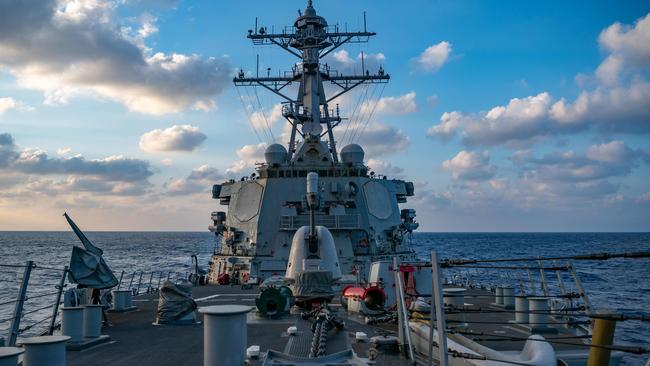
Until recently we saw the China – US trade dispute as isolated. But now China is in dispute with the UK, Europe, India and Japan. And in Australia we are part of that circle of China hostility but as I will describe tomorrow there is a bizarre twist when it comes to iron ore.
There is no doubt this ring of hostility increases the danger of military conflict and I will discuss how our top defence analysts assess the danger. But it’s important to understand just how deep and widespread the global disputes with China have become.
In Britain, the opposition to China started with the embrace of the US stand on Huawei, which was part of the US drive to win the artificial intelligence/database war. Now British Prime Minister Boris Johnson plans to offer some 3 million Hong Kong citizens with British passports entry into the UK and many of those will come to Australia. China is threatening to abolish the passports.
The European Union has been involved in trade talks with China but they have stalled over the issue of subsidisation of state owned Chinese enterprises. Chinese president Xi Jinping had planned to have a summit in Europe in September but that has been postponed.
The Chinese Belt and Road strategy is designed to link China and Europe so these trade difficulties go to the heart of China’s strategy.
In India are military conflict in the Himalayas has triggered a severe split and India has curbed Chinese mobile and other technologies including the use of TikToc, which has led the US to setting up a fund to invest in Indian technology. Japan, and to a lesser extent South Korea, have had a difficult relationship with China for a long time.
Growing hostility
China looks out on a sea of antagonistic nations – a far cry from the widespread friendly links a few years ago when its strategies were totally different. But China has a lot of friends among smaller countries and is likely to offer its tourism as a rescue platform, particularly to the Pacific Islands. Those nations will carry the day in the UN.
History tells us that any nation that feels threatened by the actions of its neighbours can become very aggressive. Optimists point to signs in China that President Xi is being challenged at some levels. But Xi controls the party and his stands on Hong Kong, Taiwan and the South China Sea have widespread community support. Equally as dangerous is the fact that anti-Chinese sentiment in the US is rising dramatically. Indeed both President Trump and his challenger Joe Biden appear to be in a race to be the most “anti-Chinese“ – because that’s where the votes are.
And so the US trade dispute has moved on to America closing the Chinese embassy in Houston and China responding. The US has also made it very difficult for Chinese students to come to US and has been critical of human rights abuses in Xinjiang
But whereas a decade or so ago the United States was clearly the pre-eminent military power, that’s no longer the case. The US has wasted untold billions in the Middle East and has made poor military technology calls such as the Joint Strike Fighter. There is no certainty that if Taiwan or the South China sea become a military conflict that the US would prevail. And we can’t play a mediating role because no Australian politician has a direct connection in China. We have been invited to join, India, Japan and the US in military exercises.
Back 14 years ago in 2006 Australia’s top defence analysts, Air Power, set out in a long document for the Foreign Affairs Committee the emerging power of China contrasting with the looming American decline. It was a remarkable forecast.
In response the then Department of Defence deputy secretary strategy Michael Pezzullo reflecting his department’s view said:
“It is predicated upon a radically different set of strategic circumstances which, I must say, I do not necessarily see even in the most speculative parts of my crystal ball.
“It would also require a massive erosion of the US military capability edge which, again, I do not foresee even in the most speculative part of my crystal ball.”
The defence “crystal ball“ gave the wrong signals but It took almost 14 years for them to discover their error and the options available in 2006 have now mostly disappeared. The defence mistakes have been compounded by similar mistakes by the Department of Foreign affairs.
Conflict risk
AirPower last week contacted major defence to strategists around the world to undertake a “risk assessment” of military conflict between China and the US. They rate conflict in the next 12 months as “likely”; over the next two years as “highly likely” and over the next three years as “almost certain”.
Last month two American aircraft carriers sailed to the South China Sea for a “freedom-of-navigation operation” while China’s military conducted exercises nearby.
China responded: “The South China Sea is fully within the grasp of the Chinese People’s Liberation Army (PLA), and any US aircraft carrier movement in the region is solely at the pleasure of the PLA, which has a wide selection of anti-aircraft carrier weapons like the DF-21D and DF-26 “aircraft carrier killer” missiles.”
And there is also Taiwan.







While COVID-19 and the global economy are the major forces setting share prices, increasingly markets are starting to wake up that the biggest danger of all is the repercussions that might stem from the change in the global attitudes towards China.